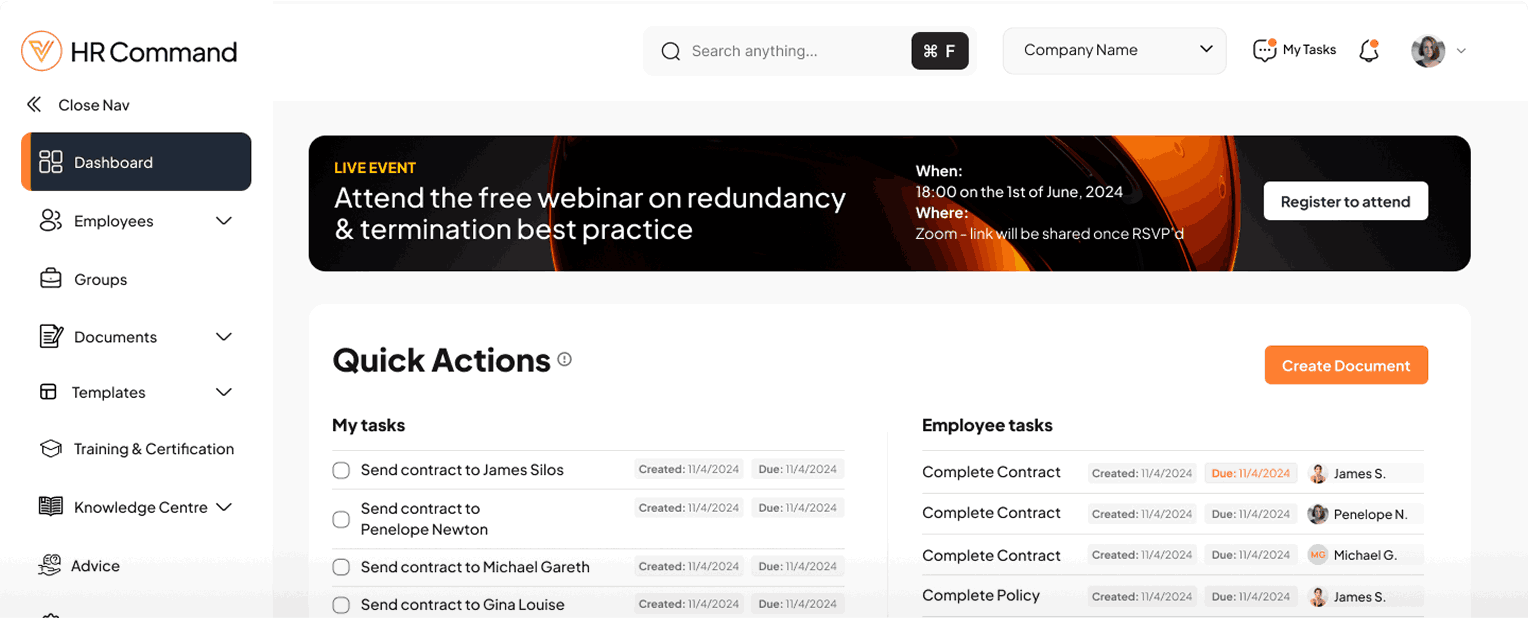When Leadership Changes Go Wrong
There are few things more disruptive to a business than a poorly handled leadership change—except perhaps an abrupt reversal of that decision. Much like rekindling a past relationship, reinstating a terminated executive can be a high-risk move that signals instability and weak governance.
The recent turmoil at OpenAI, which saw the board dismiss and then reinstate CEO Sam Altman, serves as a cautionary tale for organisations navigating executive departures. It appears that the board underestimated the ripple effect of its decision—facing intense internal backlash, investor pressure, and ultimately, a complete reversal that saw Altman return to his role under unclear circumstances.
This situation highlights the risks of mismanaging staff termination, particularly at the executive level, where hasty decisions can lead to workforce uncertainty, reputational damage, and loss of stakeholder confidence.
Lessons from OpenAI’s Leadership Reversal
Effective termination planning isn’t just about legal compliance—it’s about strategic execution. OpenAI’s board appears to have overlooked several key factors that often dictate the success or failure of leadership transitions:
- Stakeholder Communication Is Critical – High-impact decisions must be made with the backing of key stakeholders. Reports suggest Microsoft, OpenAI’s largest investor, was blindsided by Altman’s removal. This lack of alignment likely contributed to the board’s inability to enforce its decision.
- Understand the Leader’s Influence – A CEO with strong relationships across the organisation and industry can quickly rally support. The OpenAI board may not have anticipated the scale of staff and investor pressure that followed Altman’s removal, which ultimately forced his reinstatement.
- Termination Strategy Matters – Removing a high-profile leader requires careful timing, a well-crafted communication plan, and a transition strategy to maintain stability. Moving too quickly and without a structured approach can backfire, as this case demonstrates.
The Bigger Picture: Managing Executive Exits
Beyond the immediate disruption, OpenAI’s leadership crisis raises broader governance concerns. Altman himself previously acknowledged that one of the board’s control mechanisms was its ability to remove him. The failure to maintain that authority now raises questions about the board’s effectiveness in managing risk within one of the world’s most influential AI companies.
This scenario reinforces the importance of having a well-thought-out approach to leadership transitions. Companies must consider not only the immediate impact of a decision but also the potential for reputational fallout, employee unrest, and investor intervention.
What Happens Next?
The OpenAI saga is still unfolding, and further lessons will emerge as more details become public. For business leaders, HR professionals, and board members, this case study serves as a stark reminder that terminating senior executives requires more than just a decision—it demands a carefully executed strategy that minimises disruption and maintains organisational stability.
If your organisation is navigating complex leadership transitions, seeking expert guidance can help mitigate risks and ensure a smoother process.
For further insights on executive departures, feel free to contact your friendly HR Command specialist today to learn how HR Command products can support your HR needs.











